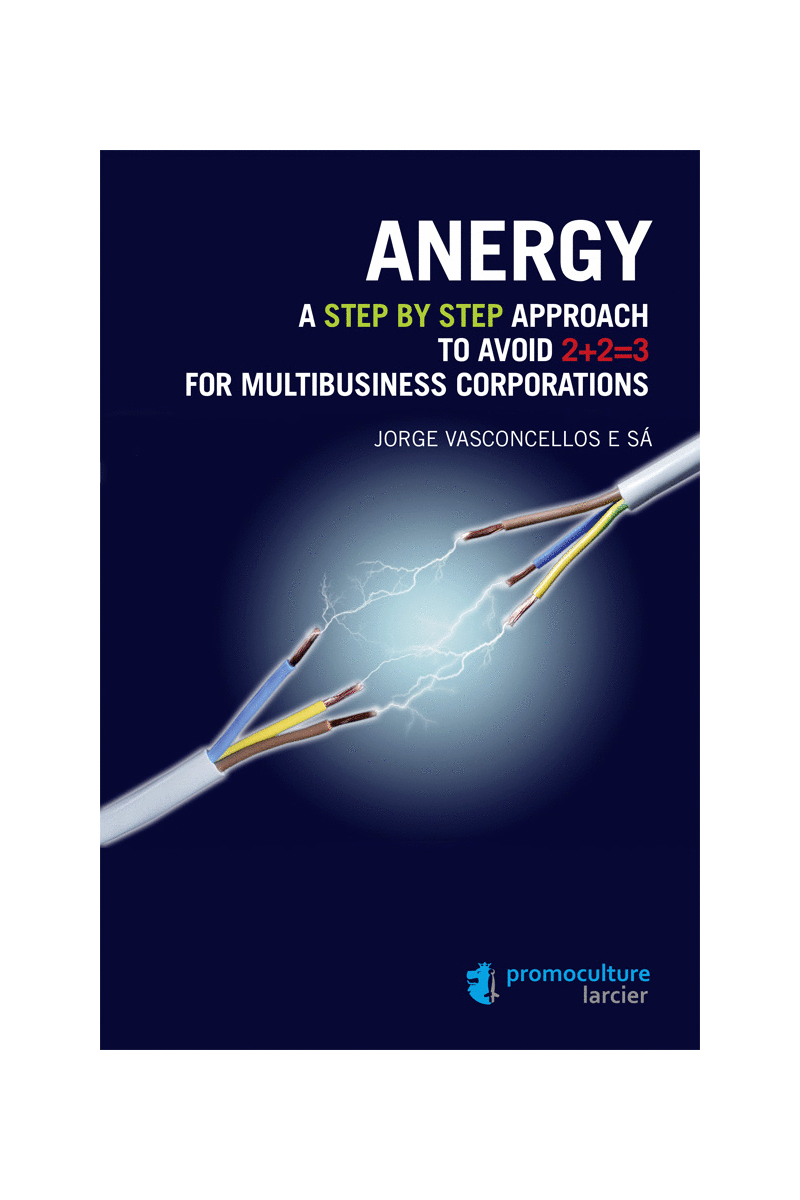 maestro
mastercard
visa
maestro
mastercard
visa

Anergy
A step by step approach to avoid 2+2=3 for multibusiness corporations

Since Agrippa, Consul of Rome, in the 5th Century B.C., first mentioned synergy ever, it has remained an elusive concept. Most specialy in the corporate world, where frequently at best the whole (company) is merely equal to the sum of the parts (divisions), plus a handful of... nothing. Worse, not seldom, anergy (negative synergy: 2+2=3) prevails, as several empirical studies indicate that often parent companies destroy value: businesses in corporate portfolios would be better off as independent companies, or as part of other corporate portfolios.
The challenge uptaken by this book is how to create synergy, an organization where businesses are better-off within the company than outside? This is achieved by an eleven step system on how to go about defining corporate strategy, where each step is illustrated by using a real case study.
As the reader goes through this book, it will become clear that this book owes much to Peter Drucker. Although Drucker wrote more than fourty books, the present one comes closer to none in being the book that he would likely have written on corporate strategy.
Digital version available on :
- Strada lex Belgium
You have a subscription? Activate the digital version for free with the code in the book.
| Type of product | Book |
|---|---|
| Format | Paperback |
| EAN / ISSN | 9782879747941 / 9782879747965 |
| Weight | 590 g |
| Status | Available |
| Number of pages | 376 p. |
| Access to exercice | No |
| Publisher | Larcier |
| Language | English |
| Publication Date | Jul 23, 2015 |
| Available on Strada Belgique | Yes |
| Available on Strada Europe | No |
| Available on Strada Luxembourg | No |
I. The search for corporate strategy
II. Overview of the solution (the eleven step model)
III. First step: Defining the present strategy
IV. Second step: Optimizing the structure
V. Third step: Parent information to the subsidiaries
VI. Fourth step: The subsidiaries strategies
VII. Fifth step: Planned abandonment of the subsidiaries
VIII. Sixth step: Diversification into new geographic regions
IX. Seventh step: Embracing new industries
X. Eighth step: Thinking out of the box
XI. Ninth step: Thinking out of the box
XII. Tenth step: Using the devil’s advocate to compare all alternatives
XIII. Eleventh step: Implementing the new strategy
XIV. Conclusion: From anergy to synergy
Selected bibliography
Summary of the book framework